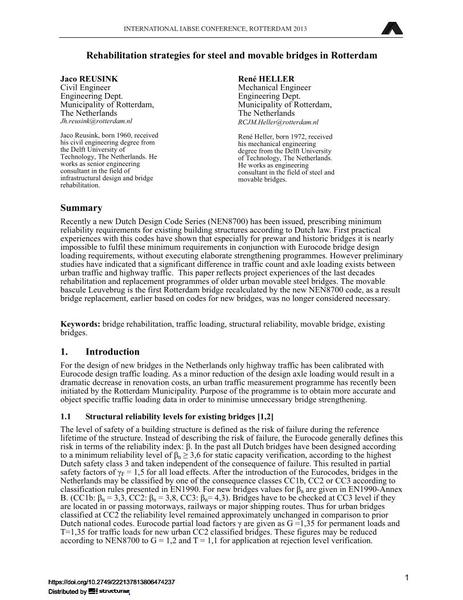Rehabilitation strategies for steel and movable bridges in Rotterdam

|
|
|||||||||||
Détails bibliographiques
| Auteur(s): |
Jaco Reusink
René Heller |
||||
|---|---|---|---|---|---|
| Médium: | papier de conférence | ||||
| Langue(s): | anglais | ||||
| Conférence: | IABSE Conference: Assessment, Upgrading and Refurbishment of Infrastructures, Rotterdam, The Netherlands, 6-8 May 2013 | ||||
| Publié dans: | IABSE Conference, Rotterdam, May 2013 | ||||
|
|||||
| Page(s): | 70-71 | ||||
| Nombre total de pages (du PDF): | 8 | ||||
| Année: | 2013 | ||||
| DOI: | 10.2749/222137813806474237 | ||||
| Abstrait: |
Recently a new Dutch Design Code Series (NEN8700) has been issued, prescribing minimum reliability requirements for existing building structures according to Dutch law. First practical experiences with this codes have shown that especially for prewar and historic bridges it is nearly impossible to fulfil these minimum requirements in conjunction with Eurocode bridge design loading requirements, without executing elaborate strengthening programmes. However preliminary studies have indicated that a significant difference in traffic count and axle loading exists between urban traffic and highway traffic. This paper reflects project experiences of the last decades rehabilitation and replacement programmes of older urban movable steel bridges. The movable bascule Leuvebrug is the first Rotterdam bridge recalculated by the new NEN8700 code, as a result bridge replacement, earlier based on codes for new bridges, was no longer considered necessary. |
||||
| Mots-clé: |
pont mobile
|
||||

